Announcer:
The following program is a PBS Wisconsin original production. You’re watching “Here & Now” 2024 election coverage.
Frederica Freyberg:
Milwaukee braces for the Republican National Convention, where the GOP presidential nominee is all but determined. Democrats are still holding their breath.
I’m Frederica Freyberg. Tonight on “Here & Now,” political commentators Scot Ross and Bill McCoshen are here previewing next week’s grand old party convention in Milwaukee. And we hear guidance about now legal absentee ballot drop boxes. It’s “Here & Now” for July 12.
Announcer:
Funding for “Here & Now” is provided by the Focus Fund for Journalism and Friends of PBS Wisconsin.
Frederica Freyberg:
The Republican National Convention is next week in Milwaukee, but the hyper focus remains on Joe Biden. And for the president on the ropes, tough choices. How does the race shape up in the critical state of Wisconsin? We turn to our political panelists, Republican Bill McCoshen and Democrat Scot Ross. And thanks for being here.
Scot Ross:
Great to be here.
Bill McCoshen:
Thanks for having us.
Frederica Freyberg:
So first to you Scot, in all of this, what do Wisconsin Democrats want Joe Biden to do?
Scot Ross:
Well, I think they want him to continue to talk about what he’s done for the people of Wisconsin and what the choice is between he and Donald Trump. I mean, you know, everything that I see: electeds, activists and donors are all riding with Biden still. You know, he had a tough week. But the fact is he has emerged from it. His speech on Thursday was — his hour-long press conference with the media, where he was being grilled, you know, showed him at the top of his game. And I think that that’s what Democrats want to see. They want to see that contrast: issues, abortion, healthcare, democracy. And, you know, again, pivoting back to Donald Trump, a guy who has 34 felony counts, who on Thursday would have been sentenced if the Supreme Court, which he controls, hadn’t named him immune from prosecution.
Frederica Freyberg:
He’s definitely on the ropes, though.
Bill McCoshen:
He’s definitely on the ropes. I don’t think we’ve ever seen anything like this in our lifetime. The latest a sitting president has gotten out of the race is March 31st, 1968. I was three years old, LBJ. Are we going to see that in the next ten days? I’m not sure. But if you look at how destabilizing the debate performance for Biden was, we had a situation where he was literally on the mat and came to Madison last week, didn’t do that great, didn’t do very well with George Stephanopoulos, made some mistakes there. Does a full, hour-long press conference last night, but he sends the Congressional Democrats a letter on Monday saying, “Hey, I’m your candidate. I’m in the race. I’m not getting out.” Three days later, former Speaker Nancy Pelosi is asked about this, and she says, “Well, he just needs to make a decision.” Either she didn’t read the letter or she didn’t get it, right. So Democrats are still saying he needs to make a decision. In his mind, he’s made that decision. This is all very destabilizing. So it’s good for Republicans.
Scot Ross:
Yeah, I — this is not the greatest thing for Democrats. That’s for sure. But what I will say is it shows the contrast between the two parties. You know, the Republican Party is all in for a guy with 34 felonies. You know, a guy who threatens democracy. A guy who’s — who met with Viktor Orban this week, you know, Putin’s puppet. A guy who’s going to turn our country and our foreign policy over to Putin versus a guy like Joe Biden.
Frederica Freyberg:
Let me ask you how untenable it is for someone like U.S. Senator Tammy Baldwin running for re-election?
Scot Ross:
I don’t — I mean, she said she stands with Biden. You know, that was, the was basically the statement, you know, and that’s the way she’s always been. You know, Senator Baldwin has never been somebody out there throwing bombs one way or the other. She goes out. She does the work for Wisconsinites, and she does the most important thing, if we’re talking about elections, which is win elections by delivering solidly, by raising money and by getting out all over the state. And you contrast that with her opponent, I don’t think, you know, I don’t think it matters.
Bill McCoshen:
Seventeen congressional Democrats have called for Biden to step aside, not to resign, but to step aside from the race. There were reports yesterday before the press conference that as many as 24 to 30 more were going to ask for the same thing, for him to step aside. Only one has done that since. So maybe he stemmed the tide. My sense is Tammy Baldwin can run ahead of Joe Biden, but the question is, if he’s the nominee and he’s a drag on the ticket, how much can he drag her down?
Frederica Freyberg:
So Donald Trump wants Biden to stay in?
Bill McCoshen:
Absolutely.
Frederica Freyberg:
Who would he least like to run against?
Bill McCoshen:
You know, for me, I think a young female would be a challenge for him for sure. But there isn’t one out there that’s got universal name ID, although that can be bought. But the one thing I’ll correct Scot on, major donors to Democrats for a super PAC, $90 million, they’ve told the White House they’re not going to release that money unless Biden is removed from the ticket.
Frederica Freyberg:
At the top of this program, we described it as Democrats holding their breath. Is that accurate?
Scot Ross:
I think that Democrats are trying to play this one out and see how it goes. Now, I’ll go back to what Bill said about, like, who would be the best opponent, you know, who would be the worst opponent for Trump? I’d say Kamala Harris. You know, if you look at the demographics of what — of who’s winning what, Joe Biden is beating Trump in all of the age demographics except for Gen X, 40- to 55-year-old voters. He’s down by 15 points with that. Kamala Harris would be our first Gen X president, so he does definitely not want Vice President Harris, who has a lot of name ID, who would have the operation and who can stand on Biden’s record, specifically in Wisconsin creating 169,000 jobs, getting 27,000 people student loan relief as opposed to the Trump record 89,000 jobs lost.
Frederica Freyberg:
You know, if we stay with the Biden-Trump match up though, what kind of a choice is this for voters? Would they be voting for the platform, the party, not the person?
Bill McCoshen:
It’s tricky. Pew Research came out with a poll this week. 63% of voters don’t want either of these choices. Yet here we are. 85% in that same poll and in the Washington Post poll this week, said Joe Biden is too old. So I think a lot of Americans would like a do-over but here we are. And so that’s how it’s going to shake out.
Scot Ross:
I do some traveling and some friends of mine from abroad were asking me, tell me about the election, earlier this year. And I said, “Well, about $5 billion is going to be spent to determine whether or not an 81-year-old or a 78-year-old is the future of the United States.” I mean, that’s where we’re at.
Frederica Freyberg:
So, down to the ground in Wisconsin, what is the most resonant issue, do you think, for voters?
Bill McCoshen:
Well, the Institute for Reforming Government released a poll this week of likely voters in Wisconsin. They said it’s inflation. 47% had listed inflation as their number one issue. I think that’s right. I think immigration is a big issue here as well. And I think the border is a big issue. I think those are the main three. Scot will add abortion, I’m sure, and that is a big issue specifically for Democrats, less so for Republicans and independents.
Scot Ross:
I mean, I guess if those are the issues that IRG says, then it’s bad news because border crossings are down, inflation is down, jobs are up. I mean, you know, it couldn’t be better. The atmosphere couldn’t be better, issue-wise for Democrats. Just a matter of not, you know, hopefully they’ll continue to do what they do, which is out-raise the Republicans, out-organize the Republicans and out-get out the vote Republicans. Again, in this atmosphere in which we’ve got a real serious threat to democracy, if this goes south for Dems.
Frederica Freyberg:
So next week, you both will be at the Republican National Convention, speaking every day with senior political reporter Zac Schultz to offer your color and insight. At the RNC, Bill, what are you most looking forward to seeing?
Bill McCoshen:
I’m excited to hear who Donald Trump chooses as his running mate. The list, I think, is a little longer than has been released. J.D. Vance is on the list. Doug Burgum, Marco Rubio, my dark horse is still Glenn Youngkin. I think he’s the one that adds the most. You want to have somebody that can put more states in play. There’s no question that Youngkin can do that. I think my second choice in that list would be Marco Rubio, because I think he helps in both Nevada and in Arizona.
Frederica Freyberg:
So does the VP matter to a Trump presidency?
Bill McCoshen:
Generally not but if have someone like Glenn Youngkin who can deliver the Virginia electoral votes, then the blue wall of Pennsylvania, Michigan and Wisconsin, you know, Joe Biden’s still got to sweep that to win.
Frederica Freyberg:
What are you going to be doing at the Republican convention?
Scot Ross:
I don’t know it’s so much what I’m going to see there as opposed to what I’m not going to see there. The former Republican president of the United States, George Bush, the former vice president of the United States, Republican Dick Cheney, the former vice president for Donald Trump, Mike Pence. And are we going to see Melania Trump there? We haven’t seen her on the trail so far. And maybe finally, you know, we’ll get Donald Trump. It’s been 154 days since he did a press conference. Maybe he’ll do one next week.
Frederica Freyberg:
Democrats are going to be seen and heard there, I understand.
Scot Ross:
Yeah, absolutely. As much as they pushed the protest lines back, Democrats will find a way to get their message out. And, you know, hopefully they’ll say the right things at the right time to the right people.
Frederica Freyberg:
We look forward to having you on our air next week. Thank you very much.
Bill McCoshen:
As do we.
Scot Ross:
It’s going to be great.
Frederica Freyberg:
Bill McCoshen and Scot Ross. Thank you.
Frederica Freyberg:
Starting Monday, look for “Here & Now” 2024 election coverage from the Republican National Convention in Milwaukee. At 2 p.m. live each day, senior political reporter Zac Schultz with panelists McCoshen and Ross. Then each night at 8:30 p.m., a Wisconsin update. And on Friday, full coverage starting at 7 p.m. on “Here & Now.”
The convention is expected to draw about 50,000 people to Milwaukee. It will also bring a national and international spotlight to the state’s largest city. “Here & Now” reporter Steven Potter will also report from the convention and has been closely monitoring the security efforts in and around the site of the RNC at Fiserv Forum.
Steven Potter:
While the thousands of attendees will be focused on the politics of the Republican National Convention next week, a significant law enforcement presence will be focused on security.
Man:
There’s still no higher priority than public safety.
Police Officer:
We’ve been working hard to ensure safety.
Woman:
Our primary focus is safety.
Michael Hensle:
My name is Mike Hensle.
Steven Potter:
Michael Hensle is the special agent in charge of the FBI for Wisconsin, one of the lead agencies responsible for convention safety and bringing personnel to Milwaukee.
Michael Hensle:
Thousands are being brought in to make sure it’s safeguarded. We have over 12 different agencies, both federal, state and local involved in this national event. The primary being the Secret Service, who has the primary jurisdiction both for the RNC here and then in August, the DNC in the Chicago area. Milwaukee PD, the Highway Patrol, really every agency within the state has some component, again, Coast Guard, Fire.
Steven Potter:
The Secret Service has established two perimeters around the Fiserv Forum, which is where most of the convention activity will be held. The larger perimeter is roughly a ten-by-ten block area that is open to the public, but any vehicle entering must be screened. The smaller perimeter is restricted only to pedestrians who have convention credentials, and they must enter through a security checkpoint. Restricted items not allowed in either security perimeter include flammable liquids, ropes, chains, large pieces of lumber, and hammers. Additionally, firearms will not be allowed in the convention-only smaller perimeter. However, per state law, firearms will be allowed within the larger security perimeter that is open to the public. Maritime restrictions will also be in place, so no boats will be allowed on the part of the Milwaukee River that flows through downtown. Hensel says that it’s not just up to law enforcement to keep the RNC safe.
Michael Hensle:
Let your local law enforcement agencies know if you’re concerned about something. That’s everyone’s responsibility and I think by doing that, we’re able to more effectively both police our local communities, but also address any concerns that the public may have.
Frederica Freyberg:
Steven Potter joins us now from Milwaukee. What provisions are being made for protests there?
Steven Potter:
There are two protest areas, one on the north and one on the south side of the larger security perimeter. Both of these areas are about a block from the tighter inner security zone. And there is one group known as the Coalition to March on the RNC and they are expecting thousands of people for a rally on Monday, perhaps 5,000 people, they say. This is the same group that unsuccessfully sued the city of Milwaukee earlier this week, saying that the protest areas weren’t close enough to the Fiserv Forum. We’ll see what this group does, if they do protest outside of the restricted areas and what consequences they may face for doing so.
Frederica Freyberg:
Five thousand protesters is a lot of protesters, but I suppose that could be expected. Have there been any threats even ahead of the convention?
Steven Potter:
There was a threat memo released by federal and local law enforcement authorities, and they noted that the Republican National Convention is an attractive target, they said. Some of the things that they’re looking for are swatting hoaxes, property damage, arson, delivery of suspicious packages. Aside from that, the local law enforcement authorities are expecting regular crime, as you would expect for some of the crowds of this size, which would be theft and robberies.
Frederica Freyberg:
I do know also that the Milwaukee Police were warning people about the crime of carjacking, which is a perennial issue, of course, but is the city battened down tight, or are people able to move about? I mean, and I guess I ask that for when the convention is in effect, proper.
Steven Potter:
The city and the downtown area is tightening as we speak, and they will be fully locked down probably by Sunday night. Beyond that, you know, local residents are telling me that they can still move freely in the downtown area and residents can move as, as they wish right now. But many of the folks who do work in the downtown area are telling me that if they can work remotely next week, they will, just to avoid the hassle.
Frederica Freyberg:
Good choice. All right, Steven Potter, thanks very much. We look forward to your reporting next week.
Steven Potter:
Thank you.
Frederica Freyberg:
A week ago, the Wisconsin Supreme Court reversed a near-total ban on the use of absentee ballot drop boxes enacted in 2022 after conspiracy claims of election fraud. In the 2020 election, Milwaukee and Madison made the widest use of drop boxes. We spoke with Dane County Clerk Scott McDonell, who calls them a commonsense tool. Why do you like the use of drop boxes?
Scott McDonell:
Well, they’re particularly important in the last week of the election, the last 3 or 4 days. The U.S. mail is not as reliable as it used to be. For us in Madison, the mail used to be processed locally. Now it goes to Milwaukee and back. So there’s concern that the ballot will arrive late. If it does, it’s not counted. Other states, if it’s postmarked, they’ll count it. But in Wisconsin, they won’t. So the drop box really helpful those last few days to make sure they get received on time.
Frederica Freyberg:
What do you say to people who still oppose them that they’re worried about fraud?
Scott McDonell:
I really don’t understand that. I mean, we’ve been using absentee voting since the Civil War. The U.S. mailboxes are less secure than a drop box, say, in Madison. The Madison ones are in front of a fire department with 24/7 personnel there, a camera. That’s not true for the mailbox in front of my house. So it doesn’t really make a lot of sense, honestly.
Frederica Freyberg:
And how busy are clerks right about now?
Scott McDonell:
This is going to be a busy few months here. Absentee ballots are out. There’s training going on for poll workers. There’s a lot going on right now. We have a training next week. We have — one of the things that’s different now, Frederica, is how much training we do for potential problems. Things like fentanyl in the mail or swatting, where people are, you know, having 911 called on their house or — so unlikely as they are, it’s something we have to prepare for.
Frederica Freyberg:
The high court ruling allowing absentee ballot drop boxes prompted an emergency meeting of the Wisconsin Elections Commission late this week to carefully craft guidance for the 1,800 election clerks across the state, who may now start using them again, starting with the August 13th primary. Elections commission administrator Meagan Wolfe metes out the commissioners’ guidance. We spoke with her just after the meeting. How does the new guidance for clerks on the use of the boxes differ from guidance given by the commission for the 2020 election?
Meagan Wolfe:
Yeah, that’s a great question. In 2020, the commission didn’t issue guidance that was very specific because clerks had been using drop boxes for decades. It was a local decision where they had been choosing, you know, whether or not it was right for their community for a long time. This guidance by the commission, I think, is different in that it does lay out some more specific information, especially as it relates to security practices. So the commission today, in their meeting, they had a public meeting where the six commissioners unanimously voted to adopt this guidance. It includes a pretty robust section on security best practices. And I think the commission’s desire today was to make sure that jurisdictions across the state, whether it’s a large city or a small town, have security best practices that they can analyze and utilize, no matter what the size of their jurisdiction, and really try to get consistency in terms of election drop box security.
Frederica Freyberg:
What are some examples of specific security around these boxes?
Meagan Wolfe:
There is some federal best practice guidance which has been shared with the clerks as part of the commission’s guidance. But the commission also went through line by line, all six commissioners in a bipartisan fashion, and they included items such as making sure that a drop box is securely affixed to the ground or the side of a building, making sure that drop boxes are secured against unlawful access or emptying. Things like analyzing to make sure a drop box has a slot that’s appropriately sized so that only an absentee ballot can be deposited and not other objects. And so many of the things are pretty common sense, but it gives the local election officials a checklist that they can go through and use when they’re analyzing their drop box security for their jurisdiction.
Frederica Freyberg:
Of course, we know that the use of these boxes exploded during pandemic voting, with more than 40% of all votes cast that year through absentee ballot. Did that result in election tipping fraud, as alleged by Donald Trump and his supporters?
Meagan Wolfe:
There has not been any widespread fraud shown to be, you know, a reality in that election. And so I think that, you know, we didn’t see those types of unlawful practices in the 2020 election. And certainly we don’t expect to see those things in the 2024 election. But things like this bipartisan guidance from the commission today will help to build on what are already very secure elections with integrity here in the state of Wisconsin.
Frederica Freyberg:
Meanwhile, at the polling places proper, there’s an expectation of heightened election observer activity with one group stating that they plan to aggressively challenge perceived ballot fraud. What are clerks prepared for with election observers, especially after two of them had to be removed from a Glendale polling place just last week during a special election?
Meagan Wolfe:
So the commission, meaning again, the six-member bipartisan commission, has also made tremendous progress this year in new observer rules. So there is a new emergency observer administrative rule that is now available. And the commission undertook over a years-long process where they actually had an advisory committee that was made up of clerks, of observers and of other groups that are involved in elections that really represented the full spectrum of Wisconsin politics. And they all came together and had multiple meetings to talk through some of the questions and concerns that arise as part of the observer process. And so I believe that that guidance, again, it’s unanimous guidance that — or administrative rule that was, you know, passed by the commission is really going to be helpful to be able to give the poll workers and the observers themselves a better understanding of what their rights are in the polling place. Observers are such an important part of a healthy election day. Being able to observe the process and this new observer rule really helps observers understand their rights in terms of what they’re able to see, and the poll workers understand, you know, what constitutes sort of orderly conduct of the polling place and when they’re able to step in when we do have those rare instances where there are disturbances.
Frederica Freyberg:
All right. Meagan Wolfe, thanks very much.
Meagan Wolfe:
Thank you.
Frederica Freyberg:
You know, the foam you sometimes see on the shores of lakes and rivers. Be forewarned. A new study shows the foam can contain very high levels of forever chemicals or PFAS, even if the water below may not. The University of Wisconsin Aquatic Sciences Center analyzed foams and water of 43 lakes and rivers in Wisconsin. Its director, Christy Remucal, is here with more on this finding. And thanks a lot for being here.
Christy Remucal:
Thanks for having me.
Frederica Freyberg:
Really important information. What does this foam look like?
Christy Remucal:
So this looks like soap that you might see in a bathtub. It’s a white, foamy material. Sometimes you see it on a lake or a river, like on a windy day or downstream of a dam, places like that.
Frederica Freyberg:
How high were the levels you found?
Christy Remucal:
So we measured PFAS concentrations in this foam and also in water. And what we found were the PFAS concentrations were 50 to 7000 times higher in the foam compared to in the water.
Frederica Freyberg:
On what body of water did you find these highest readings?
Christy Remucal:
The place where we found the highest concentrations were in Lake Monona here in Madison.
Frederica Freyberg:
So how dangerous is it to ingest?
Christy Remucal:
So PFAS, the main way we’re exposed to it is through ingestion. So we mainly think about exposure through drinking water or food or things like that. So the concentrations we’re concerned about are very low. The ones that can cause adverse health outcomes. People probably aren’t eating a lot of foam, but we still think it’s good to avoid coming in contact with it.
Frederica Freyberg:
What kind of warning would you give to folks who see it on bodies of water?
Christy Remucal:
I think our research really echoes what our state Department of Natural Resources has already said that people should avoid coming into contact with foams. They should keep their pets, their dogs out. They’ll get into the foam. They shouldn’t have their kids play in the foam. And if you do come into contact with it, you should wash your hands before eating or drinking.
Frederica Freyberg:
Your study found the high levels of PFAS in the foams didn’t necessarily translate, though, to the water below.
Christy Remucal:
Well, the ratios were relatively similar. So if we — if there was a lake that had higher concentrations of PFAS, we also had higher concentrations of PFAS in the foam. So Lake Monona, for example, it had among the higher concentrations in water in the state as well as in the foam. So they were correlated. But I think the thing that was really surprising was because the concentration effect was so high in the foam, even a lake like Lake Mendota, which has lower concentrations in the water, you still found amounts in the foam that might be of concern.
Frederica Freyberg:
So 43 site samples for this research, could we extrapolate and say, if you see this foam across the state, it’s likely the same?
Christy Remucal:
I think that’s probably true. We really try in this study to sample different water bodies. Some lakes we know have higher concentrations of PFAS. We also made sure to sample places where the concentrations are lower. So we could look at how things varied depending on the site.
Frederica Freyberg:
How does this discovery help scientists understand how these forever chemicals move in groundwater and what is the implication of that?
Christy Remucal:
So PFAS are surfactants which means they like to accumulate at the air-water interface, so the very top of the water. And so that’s why they’re in the foam where there’s lots of little bubbles. Underground, this partitioning behavior is really important for how PFAS move. So in the subsurface there’s little — lots of these little interfaces so PFAS can kind of get trapped there and that slows down how they move. And this process is really well known underneath the ground. But this was one of the first times we saw it in lakes and rivers.
Frederica Freyberg:
How does this research inform paths to PFAS cleanup?
Christy Remucal:
Yeah. So people are actually trying to generate foam on purpose as a way to concentrate PFAS and remove it from the water. So that’s something that’s under research development right now. So taking advantage of this natural ability of PFAS to accumulate in these types of environments, they’re trying to use that as a remediation approach.
Frederica Freyberg:
What’s been the reaction from the scientific community to this?
Christy Remucal:
I think — that’s a good question. And I mean, the paper just came out, so it’s a little hard to know. I think the thing that will probably be the most surprising is the concentrations of PFAS we found in foams in lakes and rivers that had lower concentrations in the water. I think that will be the biggest surprise.
Frederica Freyberg:
All right. We leave it there. Thank you very much for the information, Christy Remucal.
Christy Remucal:
Thank you.
Frederica Freyberg:
To see these and other stories, visit our website at PBSwisconsin.org and then click on the news tab. “Here & Now” special projects journalist Murv Seymour has published a series of online reports about Black therapists, youth counseling and screen addiction. To see all of our election coverage, visit WisconsinVote.org. That’s our program for tonight. I’m Frederica Freyberg. Have a good weekend.
Announcer:
Funding for “Here & Now” is provided by the Focus Fund for Journalism and Friends of PBS Wisconsin.
Search Episodes
Related Stories from PBS Wisconsin's Blog

Donate to sign up. Activate and sign in to Passport. It's that easy to help PBS Wisconsin serve your community through media that educates, inspires, and entertains.
Make your membership gift today
Only for new users: Activate Passport using your code or email address
Already a member?
Look up my account
Need some help? Go to FAQ or visit PBS Passport Help
Need help accessing PBS Wisconsin anywhere?

Online Access | Platform & Device Access | Cable or Satellite Access | Over-The-Air Access
Visit Access Guide
Need help accessing PBS Wisconsin anywhere?

Visit Our
Live TV Access Guide
Online AccessPlatform & Device Access
Cable or Satellite Access
Over-The-Air Access
Visit Access Guide
 Passport
Passport





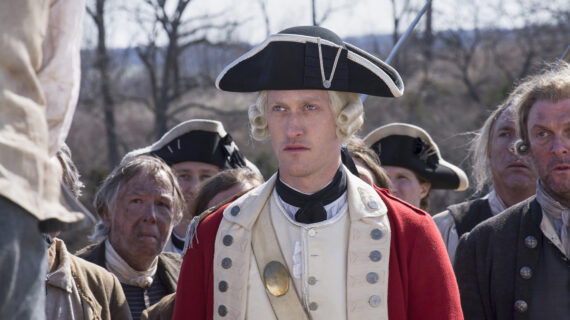
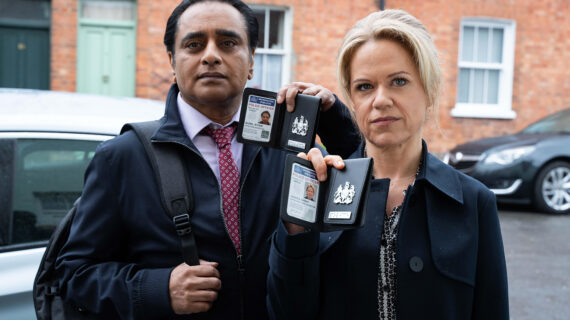
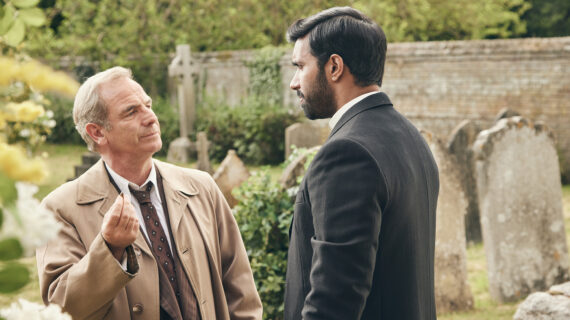


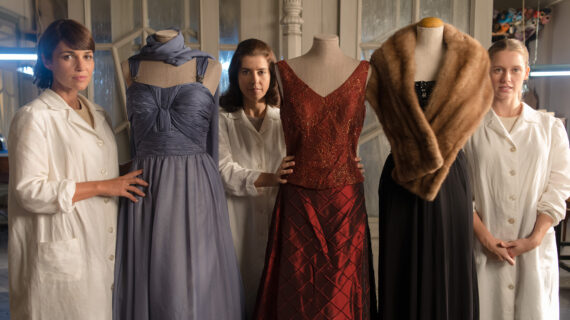


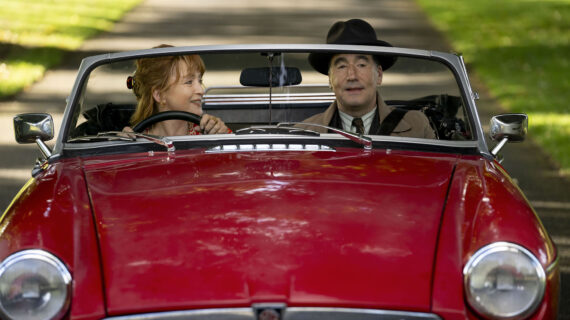
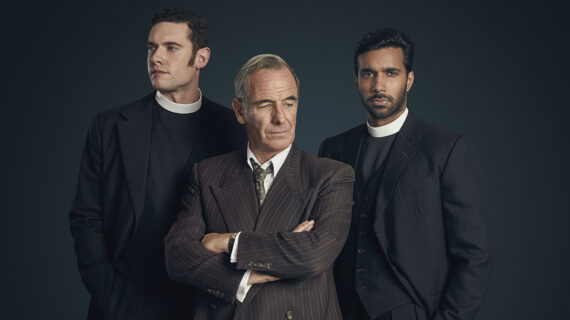
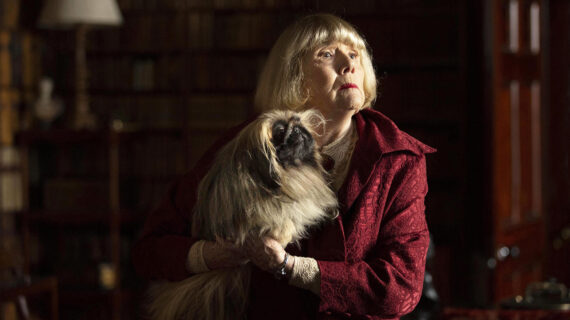

Follow Us